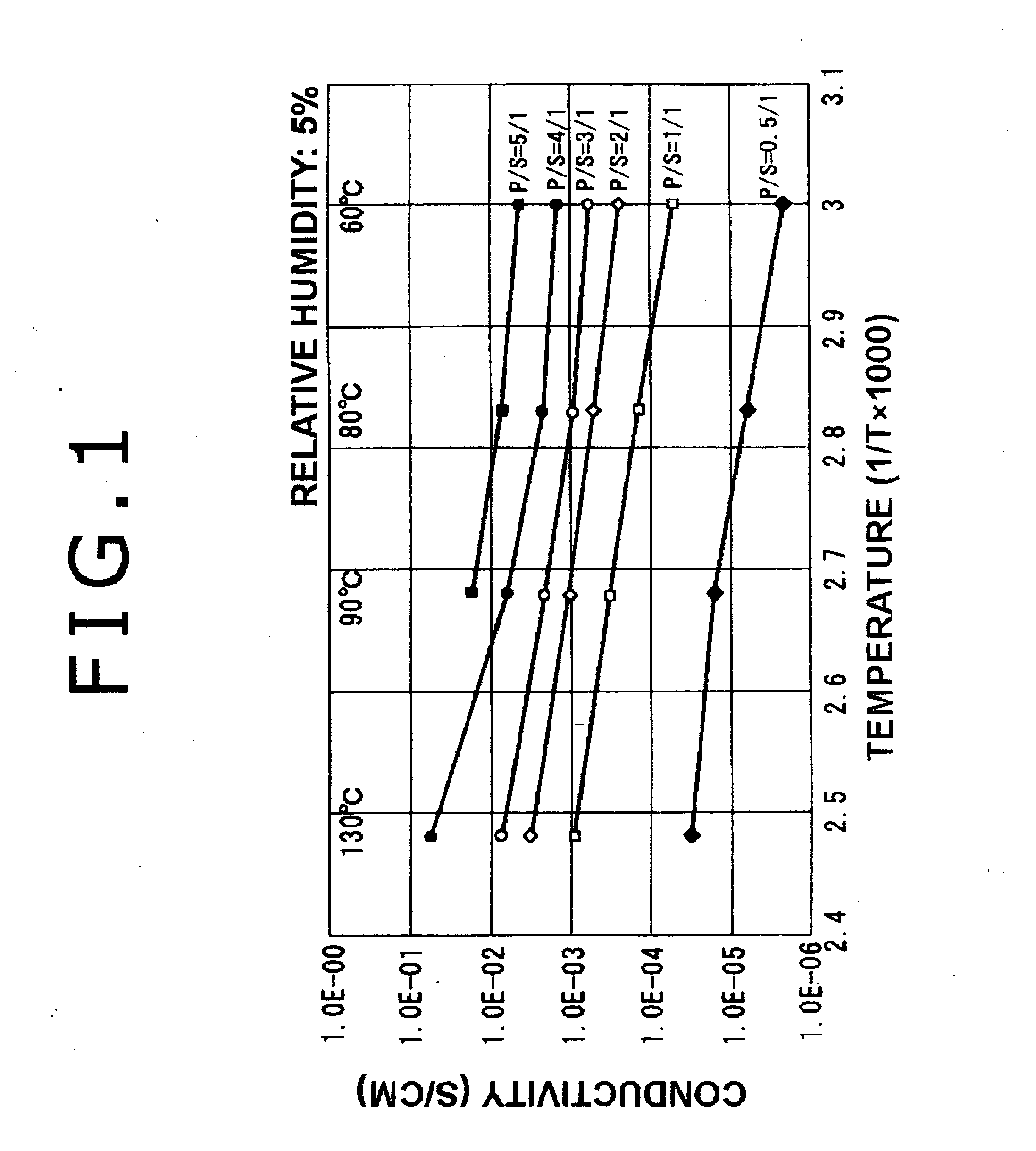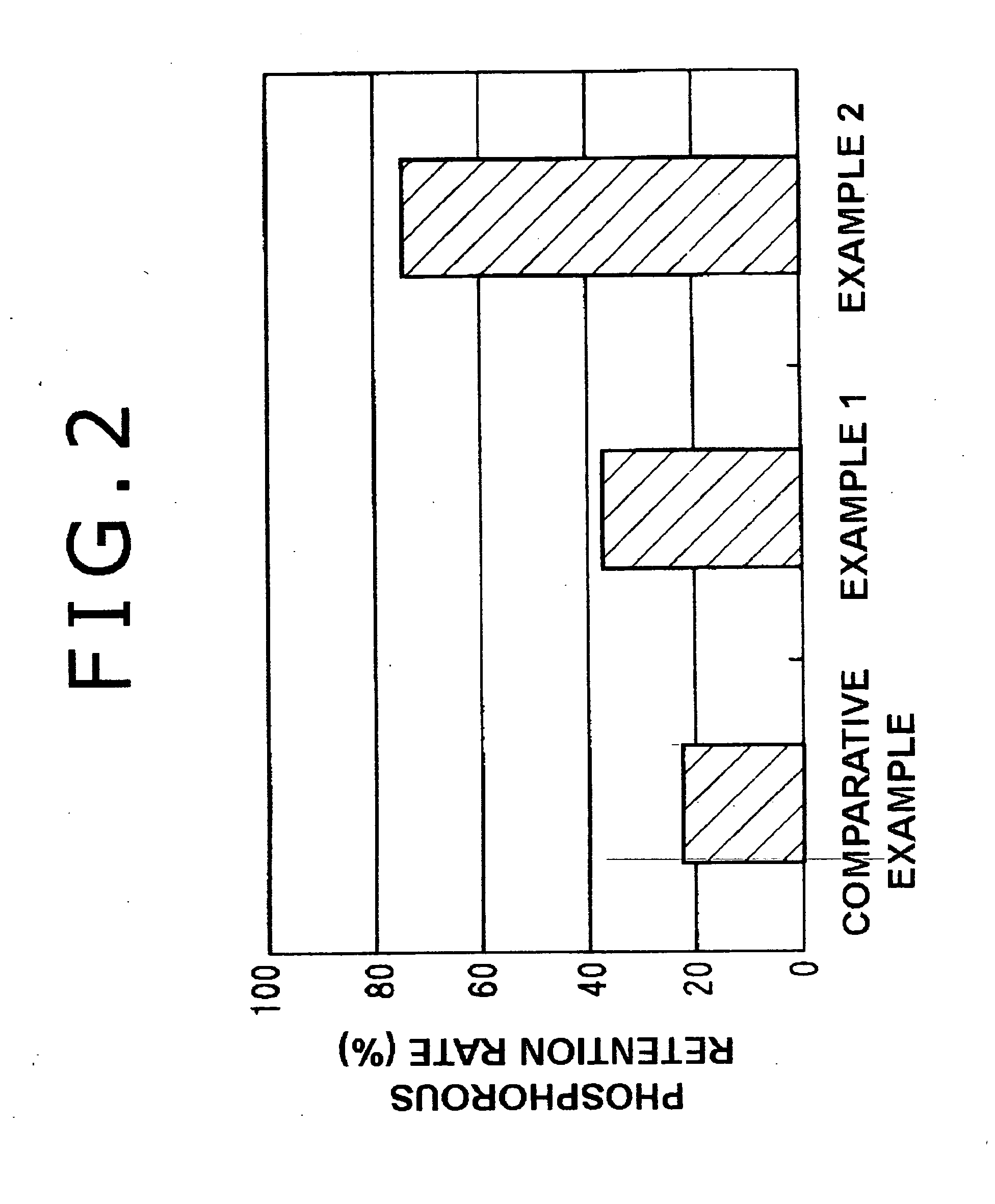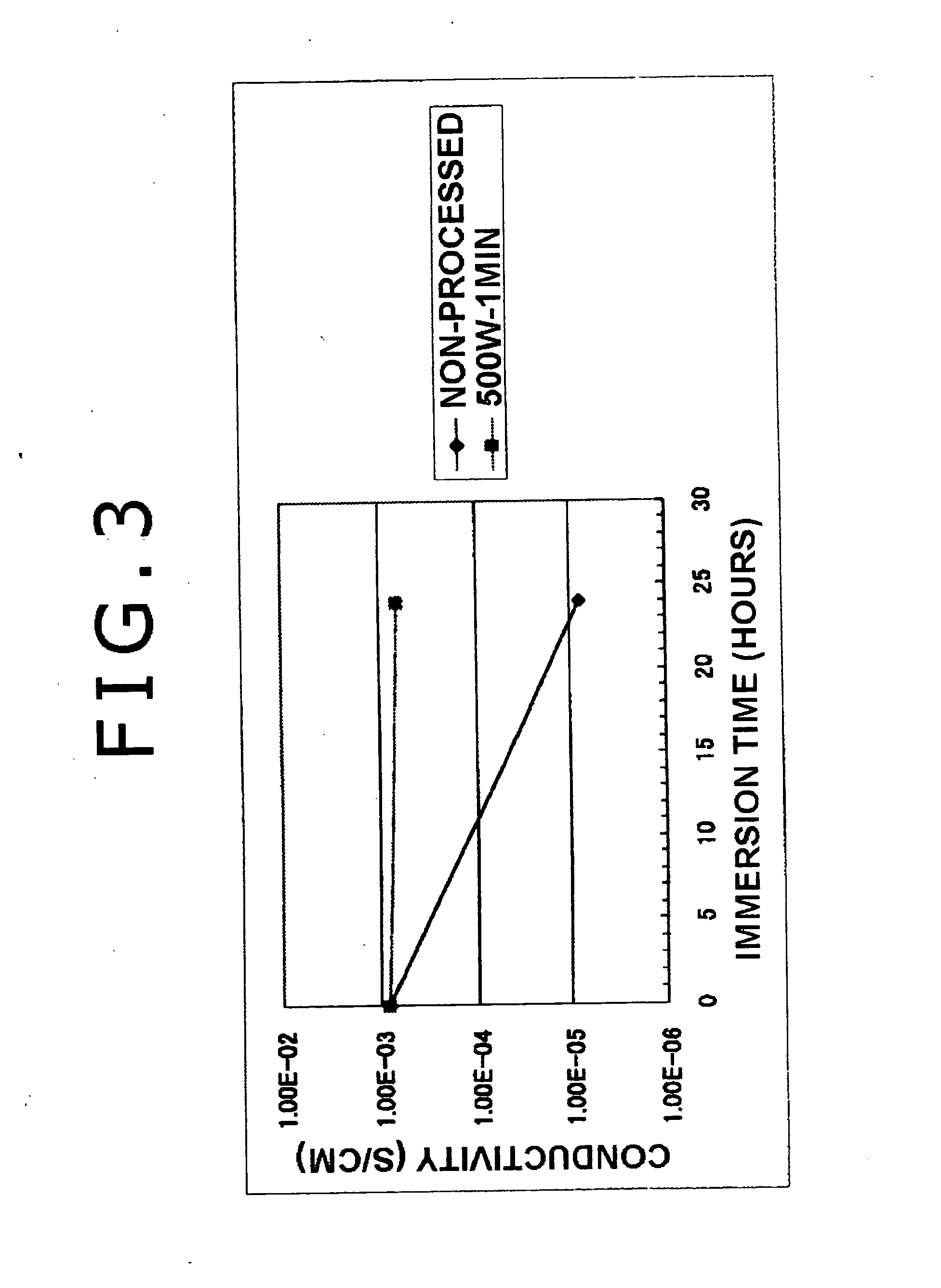Manufacturing method for electrolyte membrane
a manufacturing method and electrolyte technology, applied in the direction of sustainable manufacturing/processing, non-metal conductor manufacturing, final product manufacturing, etc., can solve the problems of gas permeation through the space, limited operation temperature, and prone to cracking of electrolyte membrane, so as to facilitate bonding, reduce the sensitivity of proton conductivity, and polymerize the skeleton and the proton conducting material
- Summary
- Abstract
- Description
- Claims
- Application Information
AI Technical Summary
Benefits of technology
Problems solved by technology
Method used
Image
Examples
Embodiment Construction
[0025] Hereinafter, a specific embodiment of the present invention will be described with reference to the drawings.
[0026] First Process Step
[0027] Polyethylene glycol (average molecular weight, 200 to 1000) was adopted for the hydrocarbon-based polymer. As shown in Formula 1, the polyethylene glycol and 3-isocyanate propyl-triethoxysilane were reacted at 60 degrees C in a tetrahydrofuran (TBF) solvent for forty-eight hours under a nitrogen atmosphere. Ethoxysilane group was then introduced by urethane bonding. Then, as indicated by Formula 2, a skeleton was obtained by introducing substituent.
H(OC2H4)nOH+2(C2H5O)3Si(CH2)3NCO FORMULA 1
(C2H5O)3Si(CH2)3NHOC(OC2H4)nOCONH(CH2)Si(C2H5O)3 FORMULA 2
[0028] Next, the skeleton with the attached substituent was dissolved in ethanol, and water and phosphoric acid were added. The obtained solution was poured into a PTFE made petri dish. Then, hydrolysis and intermediate product dehydration polymerization of the solution were performed at...
PUM
| Property | Measurement | Unit |
|---|---|---|
| temperatures | aaaaa | aaaaa |
| frequencies | aaaaa | aaaaa |
| frequencies | aaaaa | aaaaa |
Abstract
Description
Claims
Application Information
 Login to View More
Login to View More - R&D
- Intellectual Property
- Life Sciences
- Materials
- Tech Scout
- Unparalleled Data Quality
- Higher Quality Content
- 60% Fewer Hallucinations
Browse by: Latest US Patents, China's latest patents, Technical Efficacy Thesaurus, Application Domain, Technology Topic, Popular Technical Reports.
© 2025 PatSnap. All rights reserved.Legal|Privacy policy|Modern Slavery Act Transparency Statement|Sitemap|About US| Contact US: help@patsnap.com



